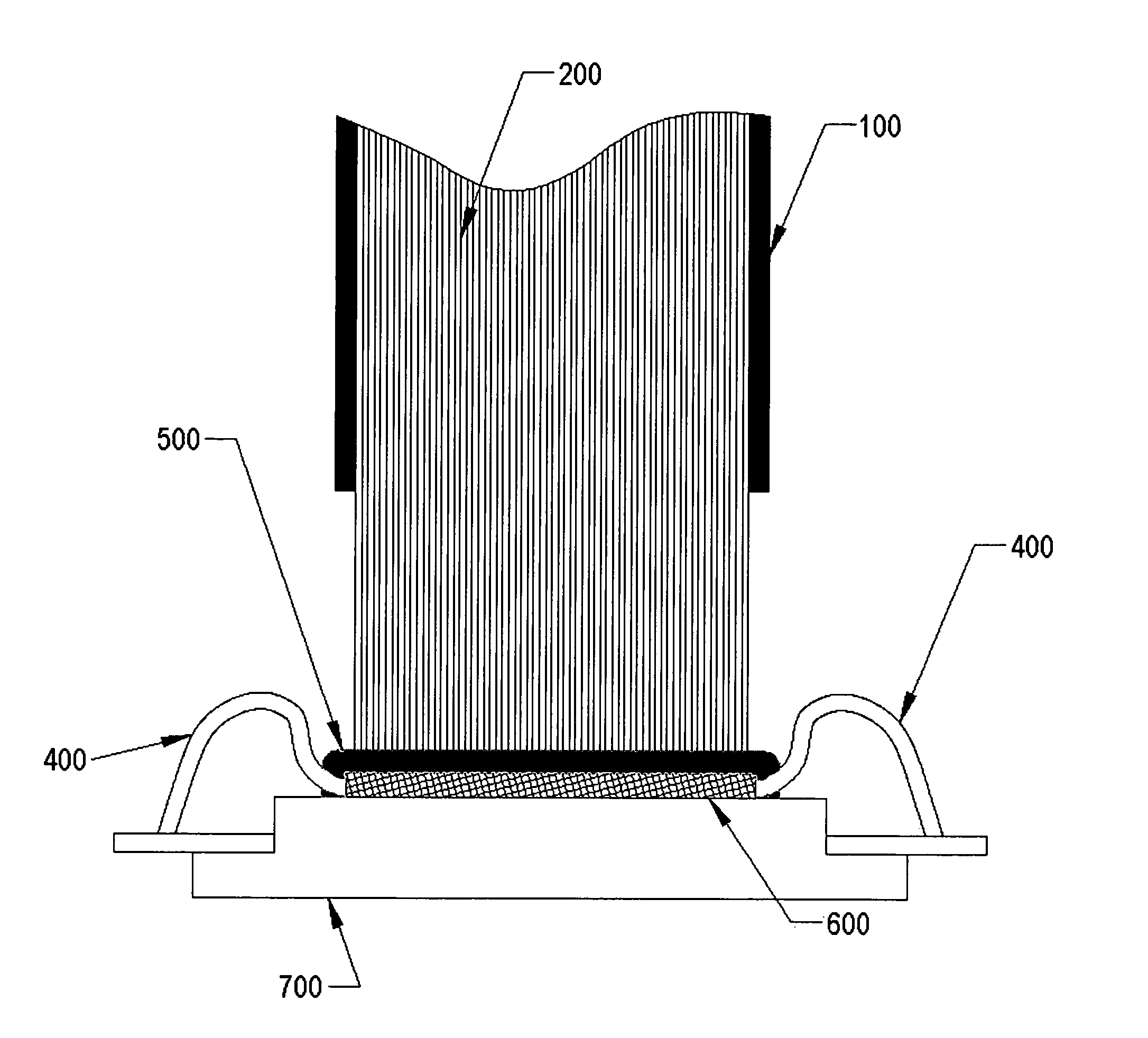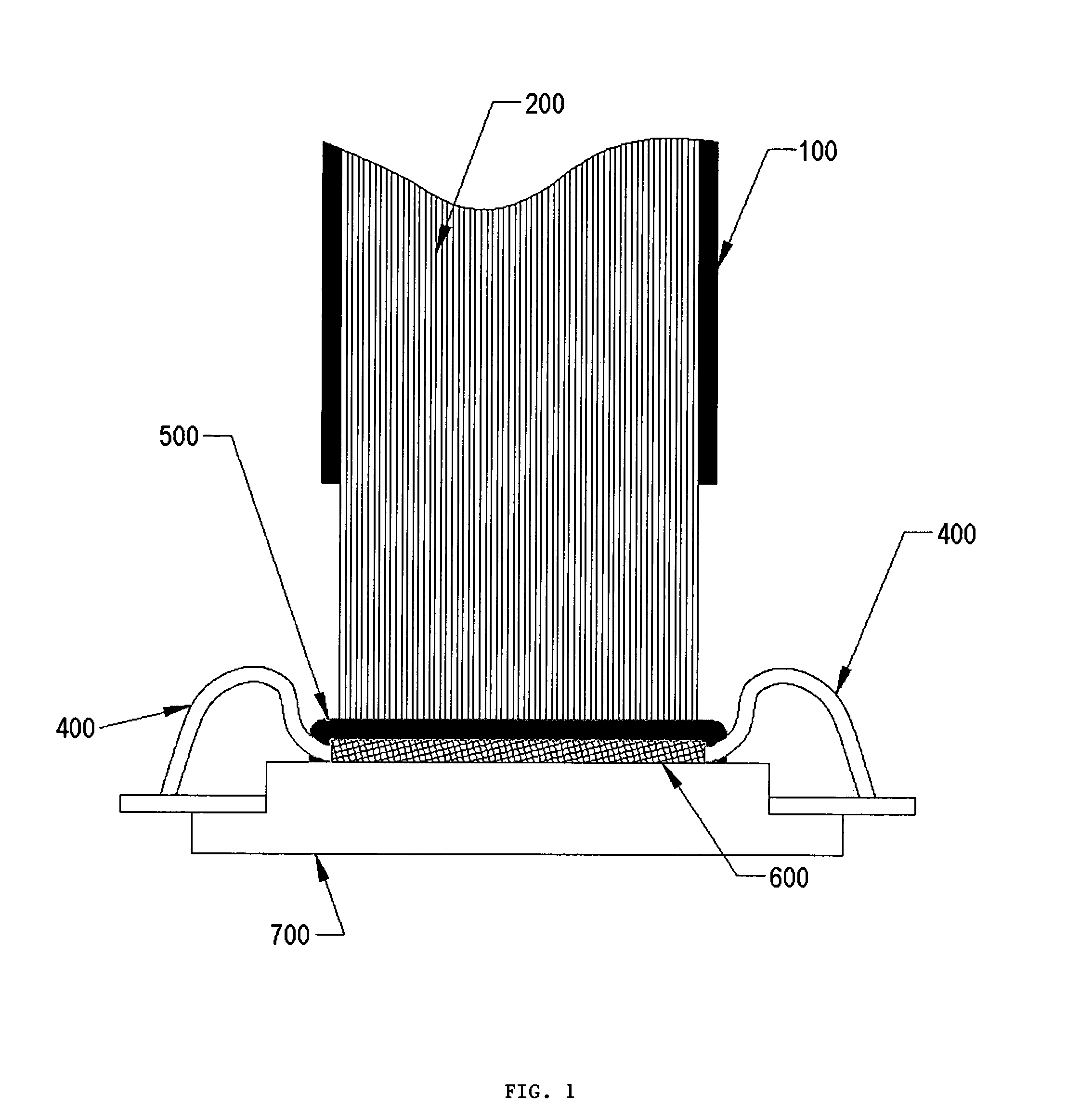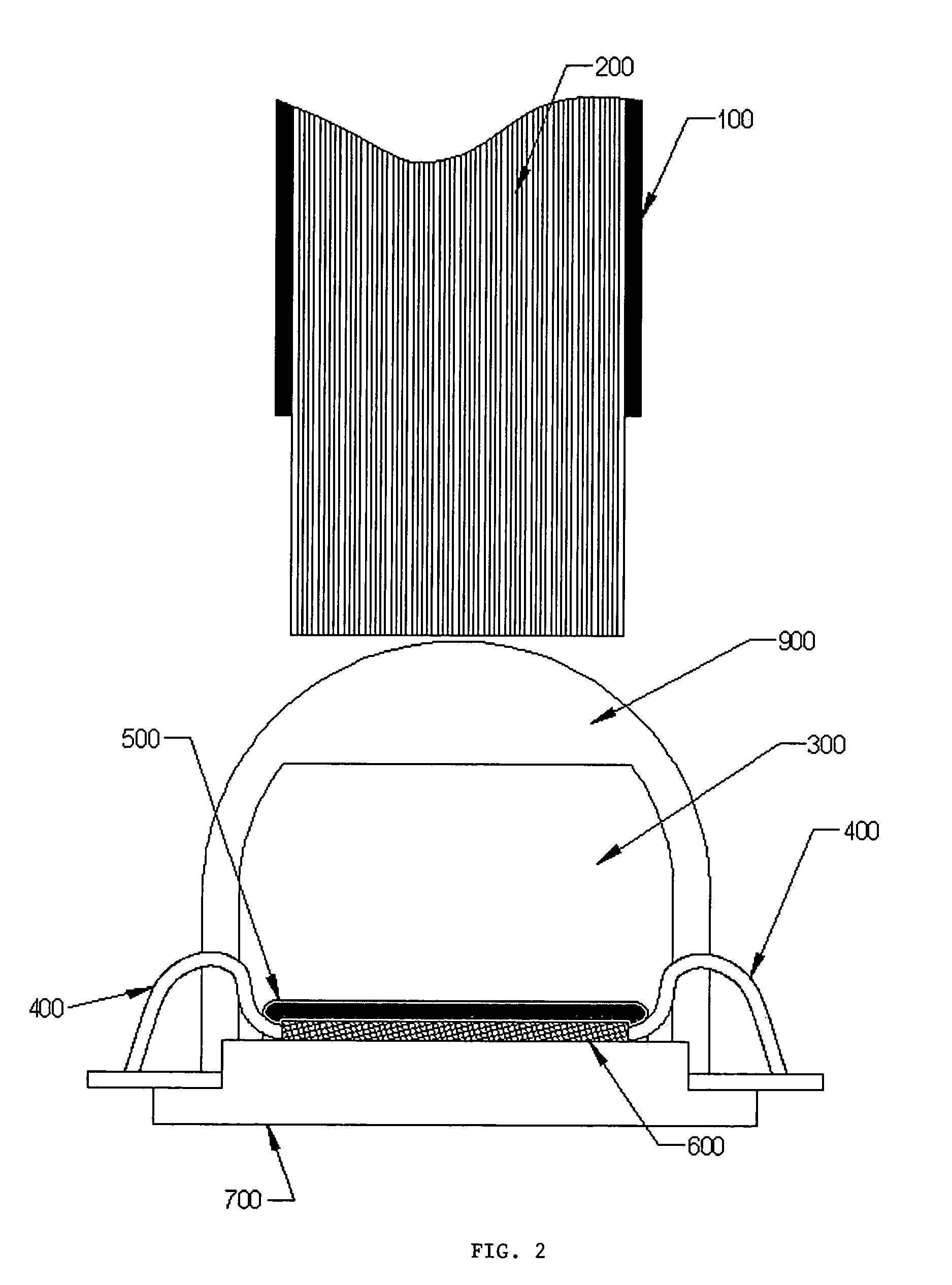Compact, high-efficiency, high-power solid state light source using a single solid state light-emitting device
a solid-state light source and high-efficiency technology, applied in lighting and heating apparatus, printing, instruments, etc., can solve the problems of poor coupling of light emitted by the led(s) into the optical fiber, large amount of heat, and inefficient conversion of electrical power to light, and achieve the effect of high efficiency, small size and high power of these devices
- Summary
- Abstract
- Description
- Claims
- Application Information
AI Technical Summary
Benefits of technology
Problems solved by technology
Method used
Image
Examples
Embodiment Construction
[0016]The preferred embodiment of this invention utilizes a high power LED (Luxeon III Model LXHL-LW3C, Lumileds Lighting, LLC, 370 W. Trimble Road, San Jose, Calif. 95131) with a typical forward voltage of 3.7V and operating current at 700 mA. This device can be safely operated up to a current of 1A with a corresponding typical forward voltage of 3.9V. This white LED has a typical color temperature of 5500K. The LED chip has an emitting surface of approximately 1 mm×1 mm, and is coated with a wavelength conversion phosphor (and / or fluorophor) that emits a broadband continuum of visible white light between about 470–700 nm.
[0017]The light emitting area of the LED is coupled to a small 1 mm square or round bundle of light guide fibers; a typical light guide bundle size used in endoscopes. The light guide bundle is composed of hundreds of individual glass (or plastic) fibers grouped together to form a single bundle at the light source, and either a single bundle or multiple bundles at...
PUM
| Property | Measurement | Unit |
|---|---|---|
| power | aaaaa | aaaaa |
| diameters | aaaaa | aaaaa |
| color temperature | aaaaa | aaaaa |
Abstract
Description
Claims
Application Information
 Login to View More
Login to View More - R&D
- Intellectual Property
- Life Sciences
- Materials
- Tech Scout
- Unparalleled Data Quality
- Higher Quality Content
- 60% Fewer Hallucinations
Browse by: Latest US Patents, China's latest patents, Technical Efficacy Thesaurus, Application Domain, Technology Topic, Popular Technical Reports.
© 2025 PatSnap. All rights reserved.Legal|Privacy policy|Modern Slavery Act Transparency Statement|Sitemap|About US| Contact US: help@patsnap.com



